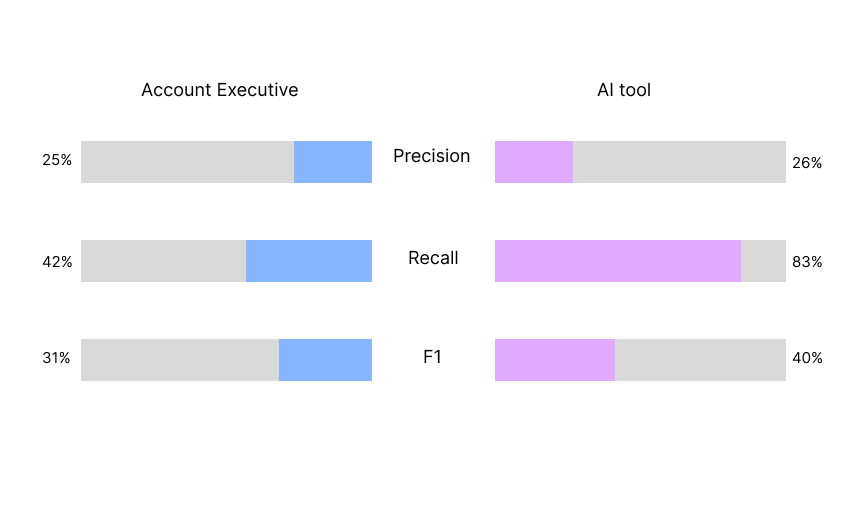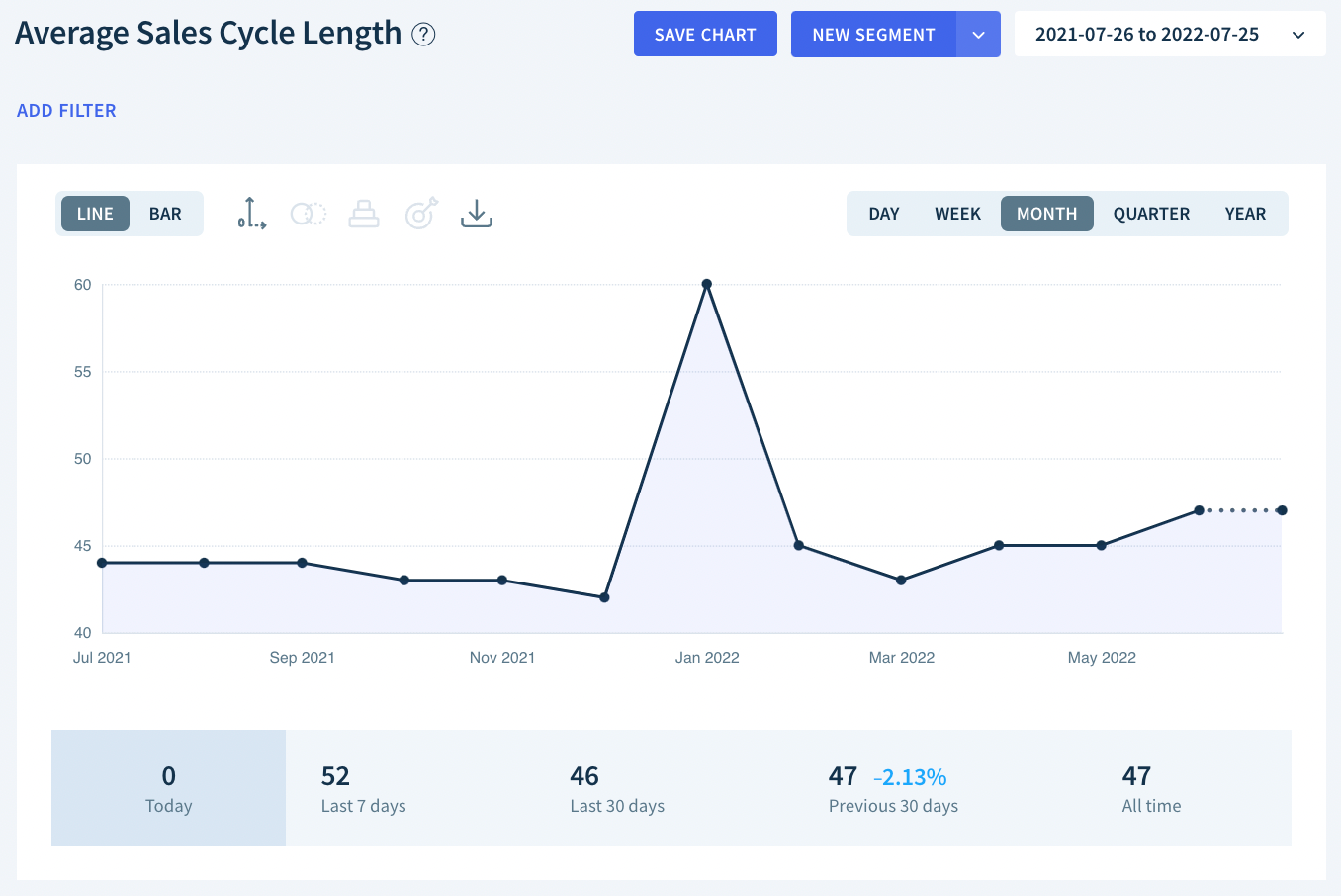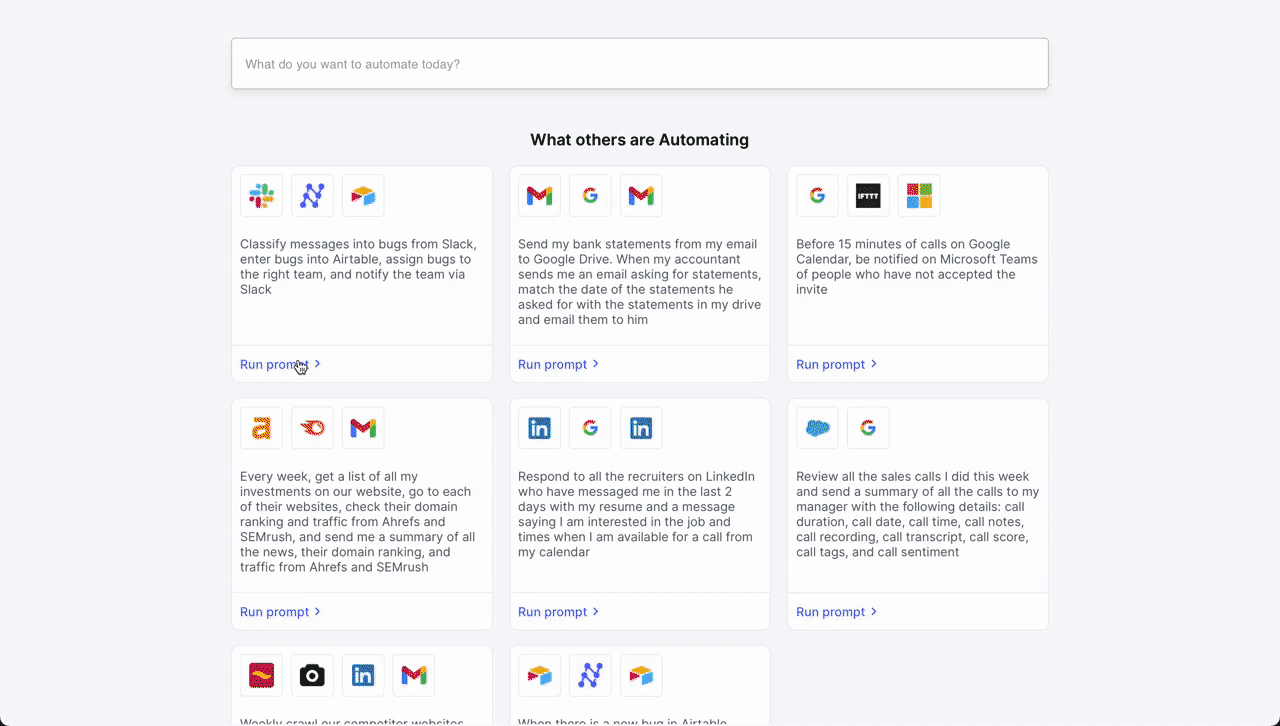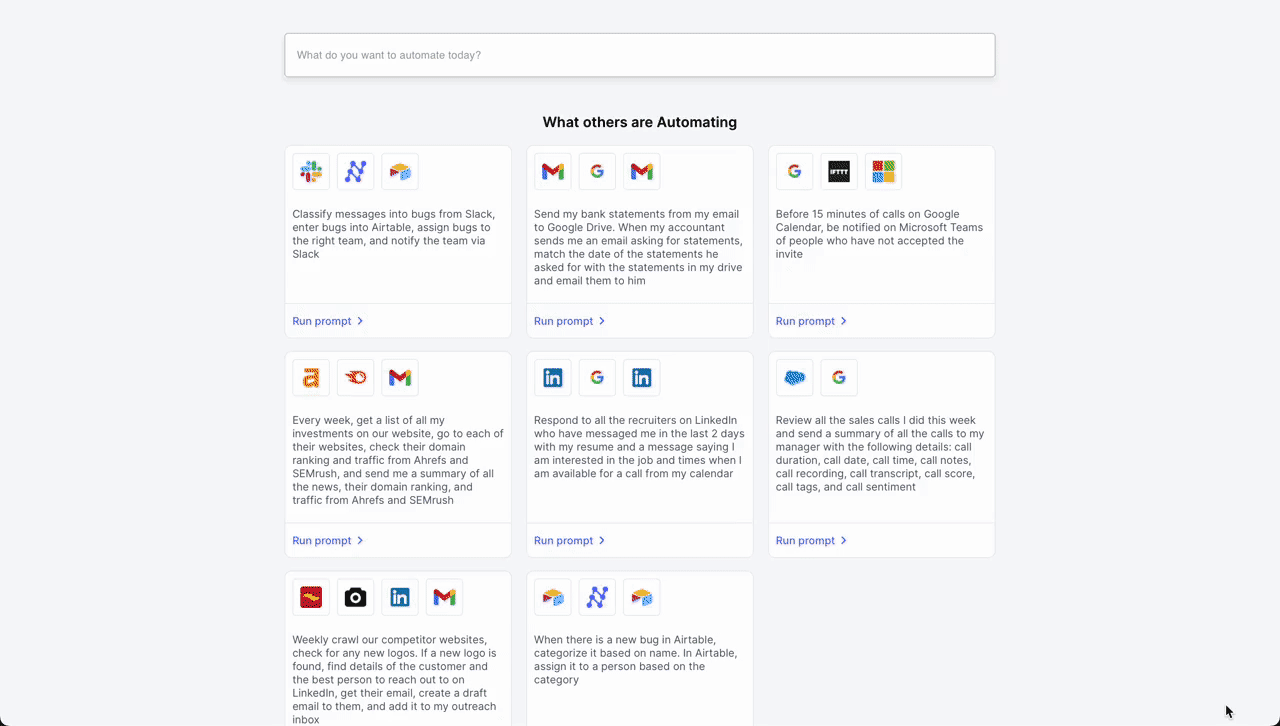In today’s fast-paced business environment, the art of selling has evolved significantly. Sales teams are no longer just about making calls and closing deals. They are about understanding, qualifying, and nurturing leads to ensure that every effort contributes to the bottom line. This is where the concept of lead qualification becomes pivotal.
Lead qualification is the process of determining whether a potential customer is a good fit for your product or service. It’s about efficiently identifying which leads are worth the investment of your time and resources. In this digital age, where customer behaviors and market dynamics are constantly shifting, mastering lead qualification is not just an advantage; it’s a necessity for survival and growth in sales.

In this comprehensive guide, we will delve into the nuances of lead qualification. We’ll explore how you can craft and implement your sales qualification process to identify and engage with the most promising prospects. And as we journey through these insights, we’ll learn how any sales team can automate their lead qualification workflow.
Understanding Lead Qualification
The journey to sales excellence begins with a fundamental understanding of lead qualification. What is lead qualification, and why is it so crucial in your sales process?
Simply put, lead qualification is the process of assessing whether a lead is likely to become a paying customer. It involves evaluating leads against a set of predefined criteria to determine their potential value to your business. This is not just about filtering out the less promising leads; it’s about focusing your efforts on those who are most likely to convert, thereby maximizing your efficiency and effectiveness.
Think of it as panning for gold. Not every element in the pan will be gold; you need to sift through to find those valuable nuggets. Similarly, in a pool of many leads, only some will truly be golden opportunities. By qualifying leads, you ensure that your sales team is working on prospects that have the highest likelihood of becoming valuable customers.
Effective lead qualification impacts your sales success in multiple ways:
- Increased Efficiency: By focusing on qualified leads, your team spends time on prospects with a higher conversion probability.
- Enhanced Customer Experience: When you engage with the right leads, your interactions are more relevant and personalized, enhancing customer satisfaction.
- Higher Conversion Rates: Qualified leads are more likely to make a purchase, boosting your conversion rates and sales revenue.

As we move forward, remember that lead qualification is not a one-time task. It’s an ongoing process that evolves as your understanding of your ideal customer profile deepens.
Psychology Behind Successful Sales
Sales, at its core, is about understanding people. It’s about tapping into the customer’s psychology to understand what drives their decisions. This understanding is crucial in lead qualification.
Every customer has a unique set of needs, desires, and pain points. Successful salespeople recognize and capture these needs to tailor their approach accordingly. This customer-centric approach is what differentiates a good sales process from a great one.
To master the art of lead qualification, you must first understand the psychology of your potential customers. What motivates them? What are their pain points? How does your product or service fit into their narrative? When you start thinking from the customer’s perspective, you begin to see opportunities that were previously hidden.
Here are some tips to keep in mind to ensure a customer-centric approach in your lead qualification process:
- Listen Actively: Pay close attention to what the customer says and, more importantly, what they don’t say. This can reveal key insights into their needs and preferences.
- Empathize: Put yourself in the customer’s shoes. Understand their challenges and show genuine concern for their problems.
- Build Trust: Establishing trust is paramount. Be transparent and consistent in your interactions to build a solid relationship.
- Provide Value: Always aim to provide value in every interaction. Whether it’s sharing insights, offering solutions, or just giving advice, make sure the customer feels valued.
By understanding the psychological underpinnings of your customers, you can better qualify leads and forge stronger connections, leading to more successful sales outcomes.
Crafting a Lead Qualification Criteria
Lead qualification is not a one-size-fits-all process. The criteria you set for qualifying leads should be as unique as your business and as diverse as the industries and customer profiles you cater to. Crafting effective lead qualification criteria requires a deep understanding of your market, your product, and most importantly, your ideal customer.
1. Understanding Your Market and Customer:
Before you can set criteria, you must understand who your customers are and what they need. This understanding will vary across industries. For instance, in the B2B sector, a qualified lead might be a decision-maker in an organization with a specific budget and a need that aligns with your offering. In contrast, in the B2C sector, a qualified lead might be an individual with particular interests or behaviors indicating a likelihood to purchase.
2. Setting the Criteria:
The heart of lead qualification lies in setting the right criteria. These criteria can include demographic information, behavioral data, specific needs, and potential to purchase. Let’s explore a few examples:
- In Real Estate: A qualified lead might be someone who has been actively searching for properties online, has a specific budget range, and is looking to buy within a certain timeframe.
- In Software Sales: Here, a qualified lead could be a business that has shown interest in your product category, has a minimum number of users, and possesses the budget to afford your solution.
- In Retail: A qualified lead might be an individual who frequently purchases items in your niche, engages with your marketing content, and falls within a certain age and income bracket.
3. Customizing Criteria to Fit Your Business:
Your business is unique, and so should be your qualification criteria. Start by identifying the characteristics of your best customers. What common attributes do they share? What needs do they express? This information forms the foundation of your criteria.
4. Flexibility and Adaptation:
The market is dynamic, and so are customer behaviors. Your lead qualification criteria should be flexible enough to adapt to changes in the market. Regularly review and update your criteria based on new data and insights.
5. Integrating Technology:
Leverage technology to gather data and automate parts of the qualification process. Tools like CRMs can track customer behaviors, preferences, and interactions, providing valuable insights to refine your criteria.
6. Aligning Sales and Marketing:
Ensure that your sales and marketing teams are aligned on the qualification criteria. Consistency across teams ensures that everyone is working towards the same goal and targeting the same customer profile.
7. Feedback Loop:
Implement a feedback loop where sales teams can provide insights from the ground. This feedback is crucial in fine-tuning your qualification criteria.
8. Continuous Learning and Evolving:
The best sales teams are always learning and evolving. Keep an eye on industry trends, customer feedback, and sales data to continually refine your approach.
Examples of Successful Qualification Criteria in Various Sectors:
- Technology Sector: A tech company might focus on leads that have a certain level of technical expertise, have interacted with tech webinars or whitepapers, and belong to industries that commonly use their products.
- Healthcare Sector: For healthcare products, qualified leads might be healthcare facilities with specific needs (like patient management systems), a minimum budget, and decision-making authority.
- Education Sector: An educational service provider might look for institutions or individuals showing interest in educational content, have specific learning needs, and demonstrate a willingness to invest in educational resources.
In conclusion, crafting your lead qualification criteria is an art that combines knowledge of your market, understanding of your customer, and the flexibility to adapt to changing dynamics. It’s about finding the perfect balance between a structured approach and the agility to adjust as you learn more about your leads. Remember, the more tailored your qualification criteria are to your specific business and customer profile, the more effective your sales process will be.
Techniques for Lead Qualification
In the realm of sales, lead qualification is an art that requires a blend of intuition, experience, and a systematic approach. Various techniques have been developed to streamline this process, each with its unique strengths. Let’s explore some of these techniques and understand where and how they can be effectively applied in real-world situations.
1. BANT (Budget, Authority, Need, Timeframe):
- Explanation: Developed by IBM, BANT is a classic sales qualification method where you assess a lead based on their Budget, their Authority to make a decision, their Need for your product or service, and the Timeframe within which they intend to buy.

- Real-World Application: BANT is particularly effective in high-value B2B sales, like enterprise software solutions. For instance, when selling a CRM system to a large corporation, a sales representative would use BANT to ensure that the lead has the budget for such a system, the authority to decide on the purchase, a clear need for the product, and a defined timeline for implementation.
2. CHAMP (Challenges, Authority, Money, Prioritization):
- Explanation: CHAMP shifts the focus slightly, starting with the customer’s Challenges, followed by their Authority, Money (budget), and where the purchase ranks in their Prioritization.
- Real-World Application: CHAMP works well in situations where solving a problem is the primary driver of the sale, such as in IT services. For example, a company facing significant cybersecurity challenges would be a prime candidate for a CHAMP approach, as the primary focus is on addressing their immediate challenges.
3. ANUM (Authority, Need, Urgency, Money):
- Explanation: ANUM prioritizes Authority and Need at the top, followed by the Urgency of the solution and Money (budget).
- Real-World Application: This is effective in fast-paced markets where urgency is a key factor, like in the sale of seasonal products. A retailer needing an urgent supply of seasonal goods would be an ideal scenario for applying ANUM, as the urgency and need are the primary qualifiers.
4. FAINT (Funds, Authority, Interest, Need, Timing):
- Explanation: FAINT focuses on the prospect’s Funds, their Authority to make a decision, their Interest in the product or service, their Need for it, and the Timing of the purchase.
- Real-World Application: FAINT is useful in emerging markets or startups where budget may not be clearly defined. For instance, when selling to a startup looking for scalable cloud services, the FAINT method can identify if they have potential funds (or future funding) and a genuine interest in the service.
5. MEDDIC (Metrics, Economic Buyer, Decision Criteria, Decision Process, Identify Pain, Champion):
- Explanation: MEDDIC is an intricate method focusing on Metrics the lead uses to measure success, identifying the Economic Buyer, understanding their Decision Criteria and Process, pinpointing their Pain points, and finding an internal Champion.
- Real-World Application: MEDDIC is ideal for complex, consultative sales environments, such as high-end B2B solutions. For example, in selling an advanced manufacturing system, the sales team would use MEDDIC to thoroughly understand the lead’s decision-making process and tailor their pitch to address specific pain points.
6. GPCTBA/C&I (Goals, Plans, Challenges, Timeline, Budget, Authority, Negative Consequences & Positive Implications):
- Explanation: This comprehensive framework starts with understanding the lead’s Goals, Plans, and Challenges, and aligns them with a Timeline, Budget, and Authority, while also considering the Negative Consequences of inaction and the Positive Implications of the solution.
- Real-World Application: This method is particularly suited for consultative selling in sectors like business consulting or financial services. An example would be working with a business looking to expand. Understanding their goals and challenges, and aligning your service as a solution that helps them mitigate risks while achieving their expansion plans, is where GPCTBA/C&I shines.
Choosing the Right Technique:
The choice of qualification technique depends on various factors including the complexity of the sale, the nature of the product or service, the customer’s industry, and the sales cycle length. Here are a few examples of how the ideal technique can change based on different situations:
- In High-Value, Long Sales Cycle B2B: Techniques like MEDDIC or GPCTBA/C&I are more appropriate due to their depth and focus on consultative selling.
- In Faster-Paced B2B and B2C Environments: Simpler models like BANT or ANUM can be more effective, as they allow for quick qualification without overcomplicating the process.
- In Startup or Emerging Market Scenarios: FAINT can be particularly useful due to its focus on potential funds and interest, which are crucial in such unpredictable environments.
In conclusion, while there is no one-size-fits-all technique for lead qualification, understanding the unique aspects of each method and applying them in the right context can significantly enhance your sales effectiveness. By tailoring these techniques to fit your specific situation, you can ensure that you are not just chasing leads, but engaging with prospects who have the highest potential to become valuable customers. Remember, the key is flexibility and adaptability – the ability to align your qualification process with the ever-changing dynamics of the market and customer behavior.
At this point, it becomes important to choose a qualification technique to start crafting the framework for a sales qualification workflow.
Once you have narrowed down on a technique, it is imperative to research the technique in detail and explore case studies to gain insights into how a sales qualification framework can be tailored around them. For the purposes of this blog, we’ll take up the BANT Framework and walk you through a simple implementation of sales lead qualification using BANT.
Quick Guides for exploring other lead qualification techniques –
CHAMP Sales Framework: How to Qualify Leads With 4 Questions
Discover how the CHAMP sales framework helps you focus on prospects that are ready to make a purchase by asking qualification questions on the front end.

ANUM Sales Qualification: All You Need To Know!
Learn everything you need to know about ANUM sales qualification framework that help sales reps to identify the sales opportunities.

FAINT Framework: All You Need to Check!
Learn everything about FAINT framework that can help you enhance your qualifications and drive successful conversions.

MEDDICC Sales Methodology and Process – MEDDICC
Improve your sales qualification process with MEDDIC, the framework used by top sales qualification teams worldwide for efficient and predictable growth.

BANT Isn’t Enough Anymore: A New Framework for Qualifying Prospects
Read about a new prospect qualifying framework, and why BANT isn’t enough for sales teams anymore.

How do you use SPIN to qualify your leads?
Learn how to use SPIN questions to qualify your leads more effectively in your inside sales calls. SPIN helps you uncover your lead’s needs, pain points, budget, and decision-making process.

- Miller Heiman Sales Process
An Introduction to the Miller Heiman Sales Process
The Miller Heiman sales process is a modern approach to selling and a proven methodology for managing complex sales processes. Learn more about this methodology and see how the Lucidchart Sales Solution can help you implement it right away.

N.E.A.T. Selling Explained
The N.E.A.T. sales qualification method values listening and delving into the deeper needs of a prospect over speaking. This article shows why the N.E.A.T. sales method might be ideal for your sales org.

Implementing Lead Qualification
Now that we have chosen a lead qualification framework, it is time to integrate it into the sales process. Let us discuss the steps involved in detail. In practice, it is imperative to research about the implementation of your chosen qualification technique in detail before embarking on this task.
BANT Implementation Example
Implementing the BANT framework in your sales process is a strategic way to enhance lead qualification and improve efficiency. Here’s a step-by-step guide on how your sales team can get started, even if your team hasn’t used a structured framework before:
1. Understanding BANT and Preparing Your Team
Begin by educating your sales team about the BANT framework – Budget, Authority, Need, and Timeline. Clarify the relevance of each element in the context of what you are offering.

- Budget: Understanding a prospect’s budget is crucial. It’s about recognizing whether they can realistically afford what you’re offering. This insight helps to avoid spending time on leads that are unlikely to materialize due to budget limitations. Consider it as ensuring the product fits within their financial reach before making a recommendation.
- Authority: Identifying the decision-maker is key. It’s essential to engage with the individual who has the power to approve the purchase. This focus prevents your team from expending energy on conversations with those who do not have the final say, thereby streamlining your sales efforts.
- Need: Grasping the specific needs or challenges of a prospect enables you to tailor your approach effectively. By aligning your product or service as a solution to their problems, you enhance the prospect’s perception of its value. It’s similar to a doctor diagnosing and treating a patient’s ailment with the appropriate medication.
- Timeline: Knowing the prospect’s intended purchase timeline is invaluable for prioritizing and strategizing your follow-ups. It’s about directing your attention and resources towards those who are primed to make a decision imminently. This approach is akin to gauging someone’s hunger before offering them a meal – you wouldn’t propose lunch to someone who’s just had a feast or isn’t ready to eat.
By embedding these components into your sales approach, your team can more effectively identify and pursue leads that have the highest potential for conversion. The BANT framework is not just a tool but a philosophy that, when embraced, can transform your sales process into a more targeted and successful endeavor.
2. Asking the Right Questions to Fill the BANT Form
Delving into the BANT framework requires a blend of tactfulness and thoroughness. The way you frame and ask questions under each category is pivotal in uncovering the true potential of a lead. Let’s explore the art of asking the right questions in each BANT category.
Budget Questions
- Objective: The goal here is to gauge the prospect’s financial capacity and their willingness to invest in your solution.
- Approach: Initiate the conversation with open-ended questions that create a comfortable atmosphere. Your aim is to understand, not to interrogate.
- Examples:
- “Could you give me an idea of the budget you’ve set aside for this type of solution?” This non-intrusive question allows the prospect to provide a range, setting the stage for more specific financial discussions.
- “In your past initiatives similar to this, what level of investment did your company make?” Here, you’re looking to understand their historical spending, giving you insights into their budgetary expectations.
Authority Questions
- Objective: It’s essential to identify who has the power to say ‘yes’ and understand the decision-making process within the organization.
- Approach: Frame your questions to respectfully gather information about the decision-makers.
- Examples:
- “Who will be the key decision-maker for this project? I want to make sure we address all their concerns.” This direct yet respectful query pinpoints the decision-maker.
- “Could you describe the typical decision-making process for a purchase like this in your organization?” This provides a comprehensive view of the decision-making landscape, identifying the key influencers and stakeholders.
Need Questions
- Objective: To uncover the specific challenges and requirements of the prospect.
- Approach: Encourage the prospect to openly share detailed information through open-ended questions.
- Examples:
- “What are the primary challenges you’re hoping our solution will address?” This question invites the prospect to discuss their pain points, giving you the opportunity to tailor your pitch.
- “From the features we offer, which ones resonate most with your current needs?” This helps in understanding their preferences and prioritizing the features they find most valuable.
Timeline Questions
- Objective: Determining the urgency and expected timeframe for the purchase and implementation.
- Approach: Be straightforward but allow flexibility to accommodate the prospect’s planning and constraints.
- Examples:
- “Do you have a specific timeline in mind for implementing this solution?” This inquiry provides clarity on their urgency and scheduling.
- “Are there external factors, like upcoming events or fiscal cycles, influencing your timeline?” Understanding external pressures is crucial in gauging the seriousness and immediacy of their need.
Additional Tips for Effective BANT Implementation
- Build Rapport First: Before delving into BANT questions, establish a rapport. A comfortable prospect is more likely to share valuable information.
- Active Listening: Listen attentively to the prospect’s responses. Their answers often lead to follow-up questions that can yield deeper insights.
- Contextualize Your Questions: Customize your questions to the prospect’s industry, company size, or role. This shows your dedication to understanding their unique situation.
- Adaptability: If a prospect hesitates to answer a question, be flexible. Try a different approach or revisit the question later in the conversation.
- Role-Playing and Scenarios: Use role-playing exercises within your team to practice these conversations. This helps in sharpening your questioning skills and prepares your team for real-world scenarios.
By mastering the art of asking the right questions in the BANT framework, you set the stage for a more informed and effective sales process. It’s about striking the right balance between being thorough and respectful, ensuring that your prospects feel understood and valued throughout the conversation. Remember, the quality of your questions often determines the quality of the information you receive, which in turn, shapes the success of your sales endeavors.
3. Designing the BANT Form
Designing an efficient BANT form is much like setting the stage for a successful performance. It’s about having the right elements in place to accurately capture the essential information needed for a stellar lead qualification process. Let’s explore the optimal design choices for each component of the BANT framework.

Budget: Simplifying Financial Assessment
- Range Selection: Implementing predefined budget ranges, such as ‘<$10,000’, ‘$10,000-$50,000’, or ‘>$50,000’, is akin to setting the financial parameters of your playing field. This method allows you to quickly categorize leads based on their spending capability, ensuring you match your offerings to their financial reality.
Authority: Mapping the Decision-Making Hierarchy
- Multiple-Choice Questions: These are your tools for pinpointing the role of the contact. Options like ‘Decision Maker’, ‘Influencer’, ‘End User’, or ‘Consultant’ help you identify who in the organization holds the reins or has sway over the decision-making process.
- Hierarchical Select: In scenarios where the decision-making chain is multi-layered, a hierarchical selection is akin to having a roadmap of the organizational structure. It helps you understand where your contact fits in the decision-making pyramid, be it at the executive leadership level like CEOs and CFOs, department heads, team leaders, or individual contributors.
Need: Understanding Client Challenges and Priorities
- Checkboxes: These allow leads to mark off from a list of common challenges or needs that your product or service addresses. It’s like giving them a menu of pain points from which they can select what resonates most, providing you with a clear picture of their requirements.
- Likert Scale: Use this to measure the intensity or priority of each need, categorized as ‘Not Important’, ‘Somewhat Important’, or ‘Very Important’. This approach helps gauge the weight each need carries in the prospect’s decision-making process.
Timeline: Gauging Purchase Urgency
- Radio Buttons: For a clear, single-choice indication of the lead’s expected timeframe for purchase. By offering options like ‘Within 1 month’, ‘1-3 months’, ‘3-6 months’, or ‘6 months or more’, you gain insight into the urgency of their needs. It’s like understanding whether they are at the beginning, middle, or end of their buying journey.
In conclusion, the art of designing a BANT form is about creating a seamless and intuitive process for capturing key qualification data. It’s about providing the right tools for your team to quickly and accurately assess a lead’s potential, thereby streamlining your sales process. Just as a master painter chooses the right brush for each stroke, selecting the appropriate type of data field for each BANT variable is crucial in painting the accurate picture of your leads. Remember, precision in your BANT form design translates to efficiency and effectiveness in your lead qualification efforts.
4. Implementing BANT in Your Sales Process
- Integrate BANT in CRM: Add BANT fields in your Customer Relationship Management (CRM) system to track and evaluate leads efficiently.
- Regular Review and Update: Ensure that your team regularly updates the BANT information in the CRM as they progress through conversations with leads.
5. Evaluate Lead Quality
Once you’ve implemented the BANT framework, the next pivotal step is to classify leads into ‘hot’ and ‘not’ categories. This can be done through binary lead qualification or lead scoring. Let’s explore these two methods in detail:
1. Binary Lead Qualification: The Clear-Cut Approach
- Concept: Binary lead qualification is a straightforward ‘yes’ or ‘no’ system. You set specific criteria for each BANT component, and a lead must meet all these criteria to be considered qualified.
- Implementation: For each BANT category, define clear standards. For instance, the Budget might have a minimum threshold, Authority may require a decision-maker status, Need should align closely with your product features, and the Timeline should fall within a specific period, such as the next three months.
- Example: Let’s say you’re in high-end software sales. Your binary criteria could be: Budget over $50,000; Authority at a Director level or above; Need for advanced features; Timeline for purchase within the next quarter. Only leads that check all these boxes are considered ‘qualified’.
2. Lead Scoring: The Nuanced Approach
- Concept: Lead scoring is more intricate than binary qualification. It assigns varying weights to each BANT element, creating a composite score that reflects the lead’s overall qualification status.
- Implementation: Assign weights to each BANT category based on their significance in your sales strategy. For example, Budget might carry more weight if it’s usually a key deciding factor.
- Scoring System: Develop a scoring matrix for each category. For instance:
- Budget (out of 30 points): Over $100,000 earns 30 points; $50,000 – $100,000 earns 15 points; below $50,000 earns 0 points.
- Authority (out of 25 points): C-level executive gets 25 points; Director 20 points; Manager 15 points; others 0 points.
- Need (out of 25 points): Perfect match with your product earns 25 points; partial match 15 points; low match 5 points.
- Timeline (out of 20 points): Within 3 months earns 20 points; 4-6 months 10 points; more than 6 months 5 points.
- Calculation: Add up the points from each category to get the total score. For example, a lead with a $100,000 budget (30 points), Manager level authority (15 points), perfect product match (25 points), and a 6-month timeline (10 points) scores 80 points.
- Application: Leads with higher scores are prioritized as they have a higher likelihood of conversion. This scoring system offers a more nuanced and objective way to assess lead quality.
Binary vs. Lead Scoring: Choosing Your Approach
Both binary qualification and lead scoring offer valuable insights but in different ways. Binary qualification is definitive, providing a clear yes-or-no decision on lead quality. It’s suitable when your qualification criteria are rigid and well-defined.
Lead scoring, on the other hand, gives a more gradient understanding of lead quality. It’s ideal when your sales process benefits from a nuanced view of lead potential, allowing for prioritization based on a range of qualifying factors.
In practice, you might find one method more suitable than the other based on your specific sales environment. Some sales teams prefer the straightforward nature of binary qualification, especially in high-stakes sales scenarios where meeting all criteria is critical. Others find lead scoring more dynamic and adaptable, particularly useful in environments where leads vary widely in their characteristics and potential.
Ultimately, the key is to select a method that aligns with your sales strategy and customer profile. Whether you choose binary qualification for its clear-cut decisions or lead scoring for its nuanced evaluation, both methods are designed to help you prioritize your efforts effectively, ensuring that your sales team focuses their energies where they are most likely to succeed.
6. The Power of a Feedback Loop
In the journey of sales excellence, the feedback loop plays a crucial role in refining and optimizing your lead qualification process, particularly the BANT framework. This involves a continuous cycle of feedback, analysis, and adjustment.
- Regular Team Engagement: Schedule frequent meetings with your sales team to discuss their experiences with the BANT framework. These meetings should be open forums where team members can share what’s working and what’s not, providing valuable insights from the field.
- Data-Driven Decisions: Analyze the performance data to gauge the effectiveness of your BANT-qualified leads. This analysis will highlight which aspects of BANT are most predictive of sales success and which might need tweaking.
- Evolving Your Approach: Based on this collective feedback and data, adjust your BANT criteria. This might involve shifting the weight given to each element or refining the questions your team uses to qualify leads.
- Culture of Continuous Improvement: Foster an environment where your sales team views BANT not as a static tool but as an evolving strategy that adapts to real-world experiences and market changes.
7. Historical Analysis : Learning from the Past
Conducting a historical analysis exercise can be an eye-opener in assessing the efficacy of your BANT framework.
- Retroactive Application: Have your team revisit past sales interactions and apply the BANT criteria to these historical leads. This exercise is akin to solving a puzzle with pieces from your sales history, providing a retrospective look at how BANT might have predicted outcomes.
- Comparative Analysis: After applying BANT to a significant number of past leads, compare the predicted outcomes with the actual sales results. This comparison will reveal the accuracy and predictive power of your BANT framework.
- Framework Refinement: Use these insights to further refine your BANT approach, ensuring it aligns more closely with your customer profiles and market dynamics.
8. Nurturing Leads that Fall Short
Not every lead will meet your BANT criteria initially. However, these leads can be nurtured towards qualification.
- Segmentation: Begin by segmenting these leads based on which BANT criteria they don’t meet. This allows for more targeted nurturing strategies.
- Customized Content Creation: Develop content tailored to address the specific gaps each segment has.
- Budget: Create a blog post or infographic that outlines the long-term cost savings and ROI of your product or service. This can help the lead understand the value and justify a higher budget. An article titled “Maximizing ROI: How Investing in [Your Product] Saves Money in the Long Run”.
- Authority: Develop a concise, persuasive presentation or one-pager that the lead can share with their higher-ups. This content should clearly articulate the benefits of your product. A downloadable PDF guide titled “Presenting the Benefits of [Your Product] to Your Management Team”.
- Need: Let’s say the lead is unsure how your product/service meets their specific needs. Share case studies or testimonials from past customers, especially those with similar backgrounds or needs. This demonstrates how your product has successfully addressed similar challenges. A case study video featuring a satisfied customer who had similar needs, discussing how your product helped solve their problem.
- Timeline: Provide content that keeps your product top of mind and educates the lead about the benefits of timely implementation. This could include articles on industry trends showing the urgency of adopting solutions like yours. An e-book or blog series titled “Staying Ahead: Why Now is the Right Time to Implement [Your Product]”.
- Engaging Communication: Utilize personalized email campaigns and regular follow-up calls to maintain engagement with these leads. The goal is to provide them with relevant information and updates, gradually guiding them towards successful BANT qualification.
9. Additional Tips
- Soft Skills Training: Coach your sales team on seamlessly integrating BANT questions into conversations in a way that feels natural and engaging, not interrogative.
- Ongoing Monitoring: Regularly review how effectively BANT-qualified leads are converting into customers. This continuous analysis is key to fine-tuning your approach.
- Synergy with Marketing: Collaborate with your marketing team to create content and campaigns that resonate with common needs and questions related to your BANT criteria. This alignment ensures a cohesive approach to lead generation and qualification.
In essence, the journey of lead qualification is ongoing and multifaceted. It’s not just about identifying qualified leads but nurturing potential leads and continuously refining your process. This holistic approach ensures that your sales team is not only efficient but also adaptive and responsive to the ever-evolving landscape of customer needs and market dynamics. Remember, in sales, as in life, the most successful strategies are those that evolve and adapt.
Automate lead qualification and scoring with our AI-driven workflows, designed by Nanonets for you and your teams.
Lead Qualification Workflow
In the pursuit of sales excellence, integrating the BANT framework into your sales process is a transformative step. This can be achieved through various methods, ranging from manual processes to sophisticated automated workflows. Let’s explore these approaches, culminating in a cutting-edge workflow automation solution for lead qualification using AI.
Manual Workflow: The Traditional Approach
An example of such a workflow will be –
- Initial Contact: A lead fills out a Google form, providing their email and a preferred time for a sales call.
- Scheduling: The salesperson schedules the call in Google Calendar, based on the lead’s availability.
- Post-Call Process: After the call, the salesperson creates a new record in Hubspot CRM.
- Data Entry: Using their recollection of the call and the transcript, the salesperson fills in the Budget, Authority, Need, and Timeframe (BANT) fields in the CRM.
- Qualification Determination: Based on this information, a BANT_Qualified field in Hubspot CRM is populated as True or False, indicating the lead’s qualification status.
Workflow Automation: The Modern Leap
- Automating the Process with Nanonets: By feeding the workflow description into the Nanonets workflow builder, a custom automated workflow spins up within seconds.
- Integration and Access: Connect your Google and Hubspot accounts with the Nanonets workflow, granting it access to fetch data and perform actions within these apps.
Workflow Automation with AI: The Future of Sales
- Workflow Automation: In scenarios with higher complexity, such as lead scoring, the workflow can be fully automated end-to-end.
- Workflow: The manual process we want to automate is as follows:
- Lead enters a form and provides email and a convenient time for a sales call.
- Salesperson creates a new record in Hubspot CRM.
- Salesperson creates the call event in Google Calendar based on the specified time indicated by the lead.
- Once the call is over, the salesperson uses his subjective memory of the call discussion and the sales call transcript fetched from Gong to fill the BANT form with Budget, Authority, Need, Timeframe fields.
- The lead score is thus calculated by the sales person using the filled BANT form and a pre-set formula with weights to each field.
- The lead score is updated manually in the corresponding Hubspot CRM record.
- Automating the Process with Nanonets: By feeding the workflow description into the Nanonets workflow builder, a custom automated workflow spins up within seconds.

- Visualizing the Workflow: Take a look at the demo of the above workflow in action.
- Impact Assessment & Key Findings: To understand the efficacy of this automated approach, we implemented this workflow for a case study! Let’s take a look at the results of automated lead scoring compared to manual lead scoring now.
Lead Qualification Case Study
Challenge: The Inefficiency of Traditional Lead Qualification
Sales teams often face a daunting challenge with lead qualification. The manual processes, while thorough, tend to consume a great deal of time and are susceptible to subjectivity and incomplete information. The BANT (Budget, Authority, Need, Timeline) framework, a cornerstone in lead qualification, traditionally required extensive manual effort, leading to potentially biased outcomes.
Solution: AI-Driven Transformation with Nanonets Workflow
To address this, we embraced the integration of AI through a Nanonets Workflow. This automates the extraction and analysis of BANT criteria from sales calls via sales transcripts which are read and interpreted by AI, offering a more streamlined and efficient approach to lead qualification.
Workflow: The Seamless AI-Enabled Process

- Google Forms: Triggers the workflow when a sales call form submission occurs.
- Hubspot: Automatically creates a new record with the lead’s submitted email.
- Google Calendar: Sets up a calendar event for the sales call based on the lead’s indicated time.
- Gong: After the sales call, the transcript is fetched from Gong.
- Nanonets AI: The AI reads the transcript and methodically fills in the BANT fields.
- Nanonets AI: Nanonets AI computes a lead score using either default or manually specified weights.
- Hubspot: The lead’s score is updated in the Hubspot record, completing the cycle.
Results & Impact: A Leap in Sales Efficiency
- Enhanced Precision: In a comparative study involving over 1500 sales calls, this AI-driven workflow matched or surpassed Account Executives in identifying leads likely to close. The recall rate stood at a remarkable 81%, a significant improvement over the 41% achieved through manual review, while maintaining similar precision rates.

- Reduced Cycle Times: Leads that scored 80 or above via the AI tool exhibited closure cycle times shorter by 5-10%, thereby enhancing the efficiency of the sales team.

- Flexible Scoring: Moving beyond the binary assessments of Account Executives, the AI provides a nuanced scoring scale from 1 to 100, facilitating more tailored sales strategies.
- Efficiency Gains: Sales teams reported quicker BANT qualification, elimination of data incompleteness issues, and more time allocated towards customer engagement and product development.
Time Savings
Let’s delve into a scenario where a sales team of 50 transitions from a manual process to the AI-integrated lead qualification workflow shown above, unlocking remarkable efficiency gains. This exercise isn’t just about calculating time saved; it’s about envisioning how this newfound time can be a catalyst for transformational change in sales productivity and team well-being.
Calculating the Time Savings: An Eye-Opening Revelation
- Assumptions for Analysis: Each salesperson handles about 5 leads daily, with 20 working days in a month.
- Manual Process Time: Traditionally, it takes about 22 minutes per lead.
- AI-Integrated Workflow Time: With AI integration, this time is dramatically reduced to just 1 minute per lead.
- The Quantum of Time Saved: This translates to a staggering 21 minutes saved per lead. Daily, this amounts to 105 minutes (1.75 hours) per salesperson, and monthly, it accumulates to 35 hours.
- Team-wide Impact: For a team of 50, this equates to a monumental 1,750 hours saved each month.
Harnessing Time for Greater Value
With such a significant amount of time liberated, the possibilities for enhancing productivity and enriching the sales experience are boundless:
- Deepening Customer Relationships: This additional time can be devoted to nurturing and deepening relationships with potential and existing customers. Understanding their unique needs and preferences can lead to more effective sales strategies.
- Expanding the Sales Horizon: More time for prospecting and lead generation can expand the sales pipeline, opening doors to new opportunities and markets.
- Personalizing Customer Experience: The sales team can now craft more personalized follow-up strategies for each lead, significantly enhancing the likelihood of conversion.
- Promoting Wellness and Balance: Equally important, this time can be invested in wellness activities, fostering a healthier work-life balance. By shifting tedious tasks to technology, team members can focus on aspects of their job that are more rewarding and less stressful.
Conclusion: Harmonizing Human Intuition with AI Precision
The automation of lead qualification signifies a monumental stride in sales efficiency. By combining the intuitive understanding of human sales teams with the precision of AI, we unlock a more effective and customer-centric approach to sales strategies. This case study is a testament to how integrating workflow automation in sales processes can transform the dynamics of a team, leading to improved strategies, happier customers, and a more balanced and satisfied sales force.
Automate lead qualification and scoring with our AI-driven workflows, designed by Nanonets for you and your teams.
Common Pitfalls & How to Avoid
In the world of sales, even the best-laid plans can encounter pitfalls. Recognizing and avoiding these common mistakes in lead qualification can make the difference between a thriving sales strategy and one that falters.
1. Overlooking the Customer’s Journey: One common error is failing to consider where the lead is in their buying journey. It’s crucial to tailor your approach based on their stage – whether they are just becoming aware of a problem, considering solutions, or ready to make a decision. Strategy: Develop a nuanced understanding of the customer journey and align your qualification questions and tactics accordingly.
2. Relying Solely on Intuition: While gut feelings are important, relying solely on intuition without data-driven insights can lead to missed opportunities. Strategy: Balance intuition with data. Use CRM tools and analytics to inform your decisions, ensuring a blend of human judgment and empirical evidence.
3. Inconsistent Lead Qualification Criteria: Inconsistency in applying qualification criteria across the team can lead to uneven results. Strategy: Standardize your qualification criteria. Train your team regularly to ensure everyone is on the same page, and use uniform benchmarks to assess lead quality.
4. Neglecting Follow-Up: Often, sales teams fail to effectively follow up with leads, losing potential customers. Strategy: Implement a structured follow-up process. Use automated reminders and personalized messages to stay in touch with leads, nurturing them towards conversion.
5. Underestimating the Power of Questions: The quality of questions asked during qualification can greatly influence the outcome. Poor or superficial questioning leads to inadequate understanding. Strategy: Train your team in the art of asking insightful, open-ended questions that unearth the real needs and challenges of the leads.
Embrace each mistake as a learning opportunity. Encourage your team to share their experiences and insights, fostering an environment of continuous improvement. Remember, in sales, the journey towards perfection is ongoing, and each step, even the missteps, are valuable in sculpting a robust lead qualification process.
Summary
Recap of Key Points:
- Lead qualification is the cornerstone of an effective sales strategy.
- Understanding the customer’s psychology is crucial in qualifying leads.
- Tailoring lead qualification criteria to your unique business needs is vital.
- Choose from various techniques like BANT, CHAMP, and ANUM, depending on the sales scenario.
- Workflow automation plays a significant role in streamlining lead qualification.
- Continuous training and updating of sales teams are essential for effective qualification.
- Recognizing and avoiding common pitfalls enhances the lead qualification process.
Implementing These Strategies:
Implementing these strategies in your sales process can transform the way your team engages with prospects. By understanding and applying these principles, you can ensure that your team focuses their efforts on the most promising leads, enhancing efficiency and boosting conversion rates.
Remember, the heart of sales lies in connection – connecting the right solution to the right customer at the right time. Lead qualification is more than just a process; it’s an art that balances empathy, insight, and strategy. As you refine your lead qualification approach, you’re not just improving a process – you’re elevating your team’s ability to create meaningful connections and deliver value to your customers. Embrace this journey with enthusiasm and an open mind, and watch as your sales strategy unfolds into a tapestry of success and growth.
In the constantly evolving landscape of sales, the integration of AI-driven workflow automation into sales workflows marks a significant leap forward as exemplified by the case study above. Sales teams are no longer bogged down by the manual, time-consuming tasks of lead qualification. Instead, they are empowered with tools that provide precision, speed, and efficiency, freeing them to focus on what they do best – building relationships, understanding customer needs, and closing deals.
Moreover, the time savings realized through this technology are not merely a matter of increased productivity. They represent a profound shift in how sales professionals can allocate their time and energy. With more hours in the day, sales teams can delve deeper into customer engagement, expand their prospecting efforts, and personalize their approach to each potential customer. Additionally, this newfound efficiency contributes to a healthier work-life balance, fostering a more satisfied and motivated sales force.
Remember, in the world of sales, success is not just about working harder; it’s about working smarter. And with AI-driven workflow automation, sales teams are equipped to do just that, unleashing their full potential and setting new benchmarks in sales excellence. For sales teams looking to stay ahead of the curve, adopting AI-driven workflow automation is not just an option; it’s an imperative.
Automate lead qualification and scoring with our AI-driven workflows, designed by Nanonets for you and your teams.
Workflow Automation
In the fast-evolving world of business, where time is the most valuable asset, the advent of workflow automation has emerged as a pivotal innovation. This is where Nanonets steps in, not just as a tool, but as a catalyst for transformative efficiency. Let’s explore how Nanonets redefines business processes beyond the realm of sales.
Harnessing Efficiency: The Core of Nanonets
The power of maximizing productivity in today’s business environment. In this spirit, Nanonets serves as a key to unlocking unparalleled efficiency in your business operations. In addition to this, the integration of LLMs within Nanonets Workflows has opened even more opportunities for automation of manual tasks and processes.
What we do: Nanonets is a workflow automation platform, where AI-driven technology empowers you and your team to automate manual tasks and construct efficient workflows in minutes. You can utilize natural language to effortlessly create and manage workflows that seamlessly integrate with all your documents, apps, and databases in order to read data and perform actions within them.
It’s not just about doing things right; it’s about doing the right things. With Nanonets, you automate not only to save time but to enhance the quality of your work.
The Multifaceted Applications of Nanonets
Nanonets extends its utility beyond sales. It offers a broad spectrum of applications for creating workflows at scale which are limited only by your imagination. Let’s take a look at how you can use workflow automation to create automated workflows between apps and databases to reduce manual tasks in a variety of business functions –
In Customer Support: Automate ticket handling and responses, turning every customer interaction into an opportunity to excel in service.
- Ticket Creation – Zendesk: Triggered by a customer’s request for assistance, the system promptly generates a support ticket in Zendesk. This initial step is crucial in capturing the customer’s needs efficiently.
- Ticket Update – Zendesk: Immediately upon ticket creation, an automated update is logged, reassuring the customer of the ticket’s receipt and processing status, while providing a reference number for ease of follow-up.
- Information Retrieval – Nanonets Browsing: In tandem, Nanonets Browsing undertakes a thorough search of all available knowledge bases to gather relevant information and potential solutions pertaining to the customer’s issue.
- Customer History Access – HubSpot: Concurrently, the system consults HubSpot, pulling up the customer’s past interactions, purchases, and ticket history, thereby equipping the support team with a comprehensive context for a more personalized response.
- Ticket Processing – Nanonets AI: With all pertinent information at hand, Nanonets AI analyzes the ticket, categorizing the issue and offering potential resolutions based on insights from similar past cases.
- Notification – Slack: The culmination of this process is an alert sent to the responsible support team via Slack, complete with ticket details, customer history, and suggested solutions, paving the way for a prompt and informed response.
In Bug Reporting and Tracking: Imagine a scenario where Nanonets automates customer complaints and bugs, classifies them using AI, and assigns them to the relevant teams with alerts. The efficiency gained here not only speeds up response times but also allows your team to focus on providing personalized and thoughtful solutions.

- Initial Trigger – Slack Message: The process begins with a customer service representative receiving a new message on Slack, indicating a customer-facing issue that demands attention.
- Classification – Nanonets AI: Nanonets AI steps in to classify the message based on its content and historical data, determining the nature of the issue and its urgency using advanced language models.
- Record Creation – Airtable: Following classification, a new record is automatically generated in Airtable, detailing the customer’s information, the nature of the issue, and its urgency level.
- Team Assignment – Airtable: This record then guides the assignment of the issue to the most suitable team, be it technical support, billing, or customer success, ensuring the issue is addressed by the right experts.
- Notification – Slack: The selected team is promptly notified via Slack, with a message that includes a direct link to the Airtable record, ensuring quick and efficient action.
In Scheduling: Simplify meeting arrangements, focusing your energy on preparation rather than coordination.

- Initial Contact – LinkedIn: The workflow activates upon receiving a message on LinkedIn requesting a meeting, with an AI parsing the message and initiating the scheduling process.
- Document Retrieval – Google Drive: The system then retrieves relevant documents from Google Drive, such as meeting agendas or company overviews, to prepare for the meeting.
- Scheduling – Google Calendar: Interacting with Google Calendar, the system identifies available meeting slots that align with business hours and preferences, ensuring a suitable time is found.
- Confirmation Message as Reply – LinkedIn: A confirmation message is then sent back through LinkedIn, proposing the meeting time and providing access to the prepared documents, while also inviting any further suggestions.
For Invoice Processing: Streamline financial operations, reducing errors and increasing financial integrity.
- Receipt of Invoice – Gmail: The process starts with the receipt of an invoice via email, marking the beginning of the accounts payable workflow.
- Data Extraction – Nanonets OCR: Relevant invoice data, such as vendor details and amounts, are automatically extracted using Nanonets OCR, ensuring accuracy and efficiency.
- Data Verification – Quickbooks: The extracted data is then cross-verified against records in Quickbooks, confirming the accuracy of the invoice details.
- Approval Routing – Slack: The invoice is routed for approval via Slack, adhering to set thresholds and rules, ensuring a streamlined approval process.
- Payment Processing – Brex: Upon approval, payment is scheduled according to vendor terms, and financial records are updated, maintaining a seamless flow of transactions.
- Archiving – Quickbooks: Finally, the completed transaction is archived in Quickbooks for future reference and audit trails, completing the process with a focus on record-keeping and compliance.
In Knowledge Management: Aggregate and update crucial information, making knowledge sharing within teams more efficient.

- Initial Inquiry – Slack: A team member’s inquiry on Slack about a specific customer issue, like QuickBooks integration, initiates the process.
- Automated Data Aggregation – Nanonets Knowledge Base: The system automatically aggregates data, providing a summary of relevant tickets and ongoing discussions in Slack about the issue, enhancing team awareness and collaboration.
- Ticket Tracking – JIRA: JIRA updates the team on the status and progress of related tickets, ensuring everyone is informed and coordinated.
- Reference Documentation – Google Drive: Google Drive provides access to essential documentation for troubleshooting and resolving the issue, serving as a vital resource for the team.
- Ongoing Communication and Resolution Confirmation – Slack: Slack serves as a dynamic platform for ongoing discussions, updates, and confirmation of the issue’s resolution, fostering effective team communication and collaboration.
- Resolution Documentation and Knowledge Sharing: Post-resolution, the team updates internal documentation with new findings and steps taken, shared in Slack for collective learning and future reference, enhancing the team’s knowledge base.
A Symphony of Efficiency and Innovation
Incorporating Nanonets into your business processes is like conducting a symphony where human ingenuity and AI efficiency play in harmony. It’s about striking the perfect balance – maximizing efficiency while maintaining the human touch that is essential in all aspects of business. Embrace Nanonets, and you embrace a future where your business is not just efficient but resilient, adaptable, and poised for continuous growth.
Automate manual tasks and workflows with our AI-driven workflow builder, designed by Nanonets for you and your teams.



